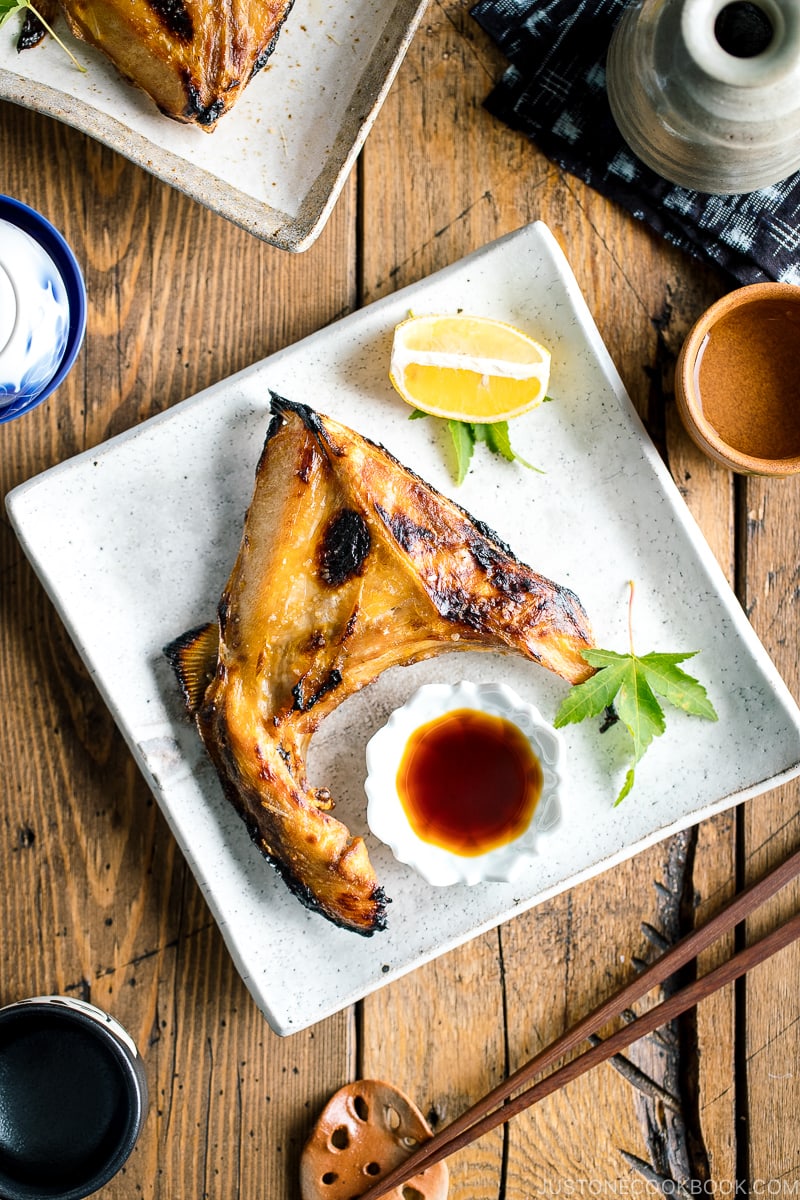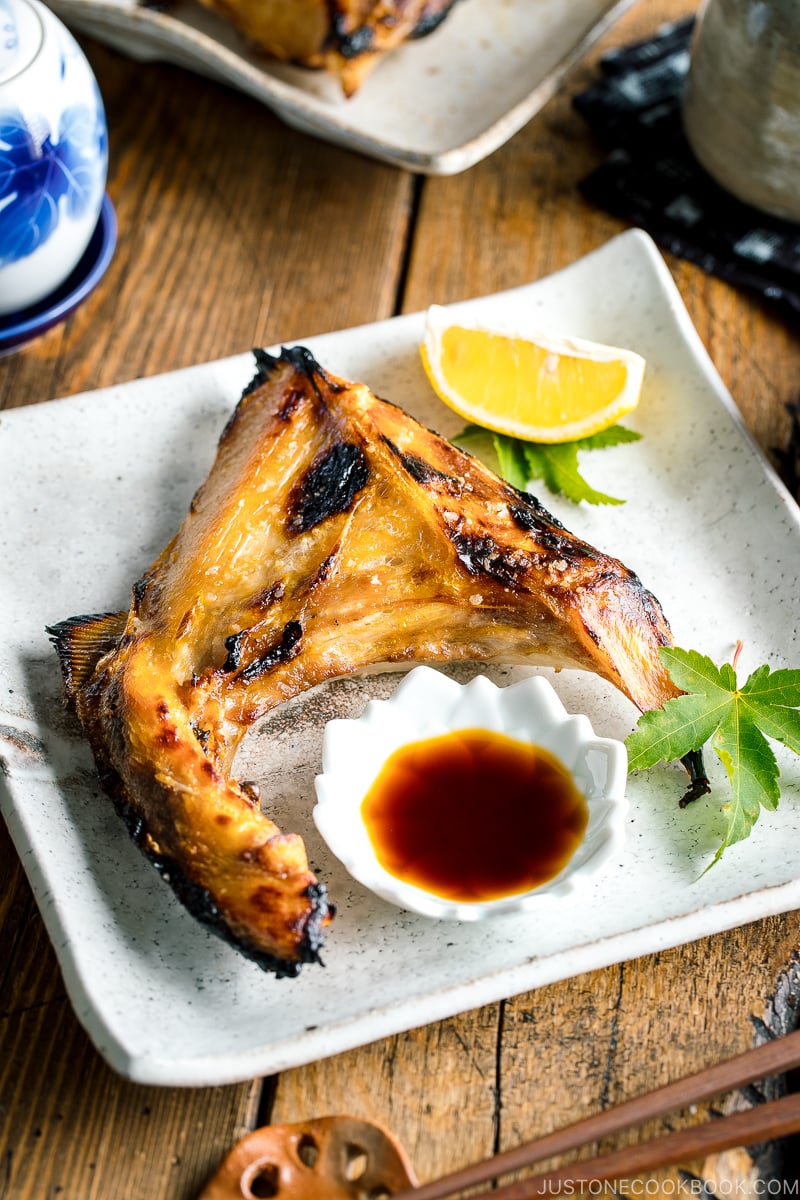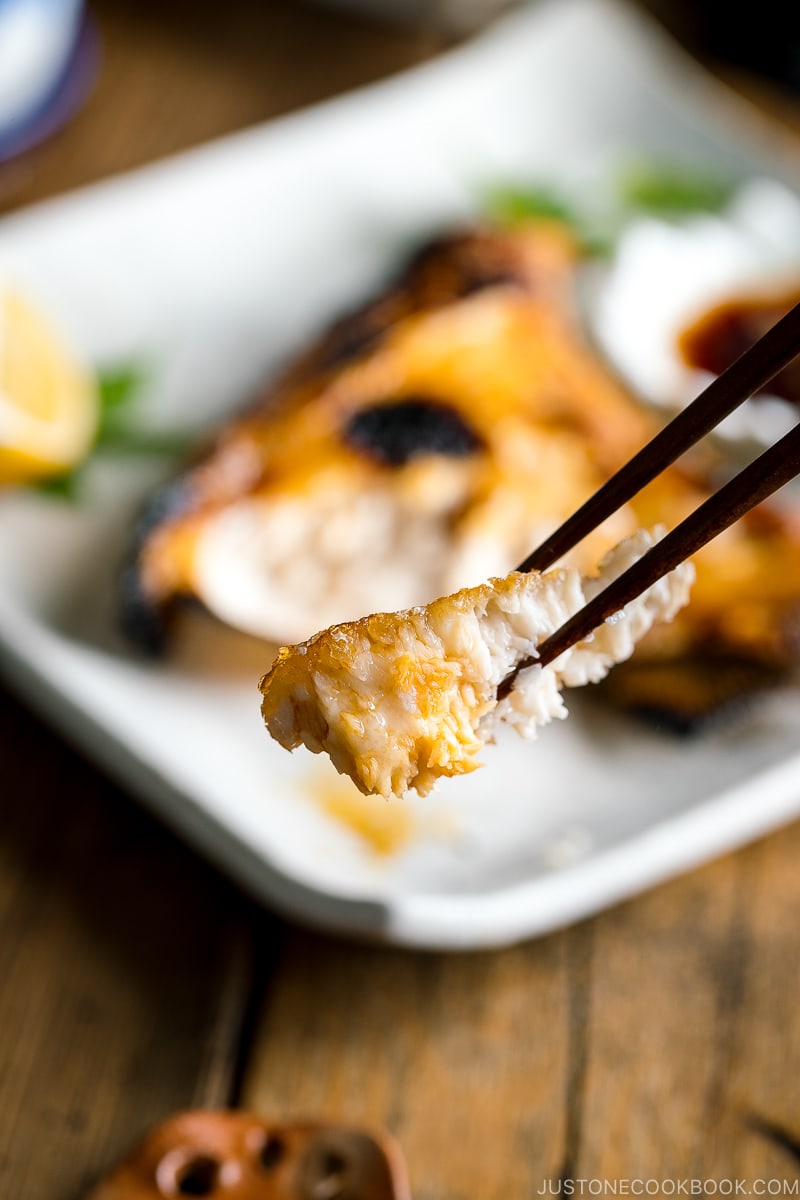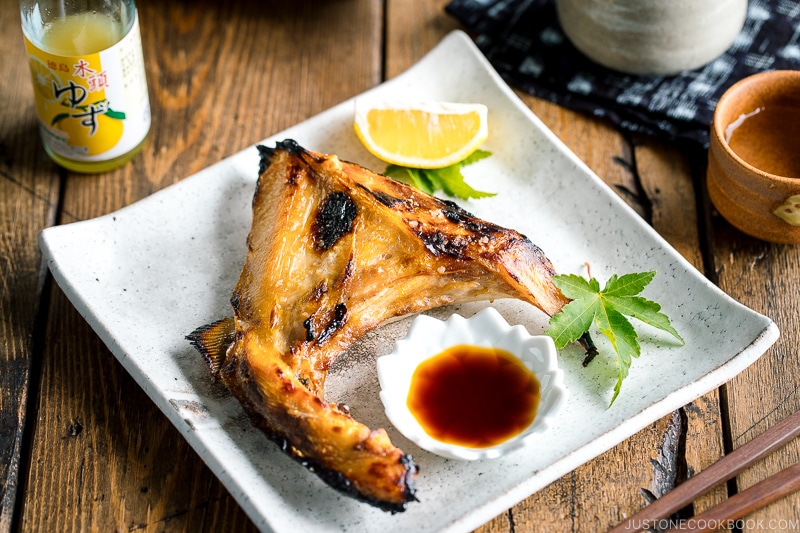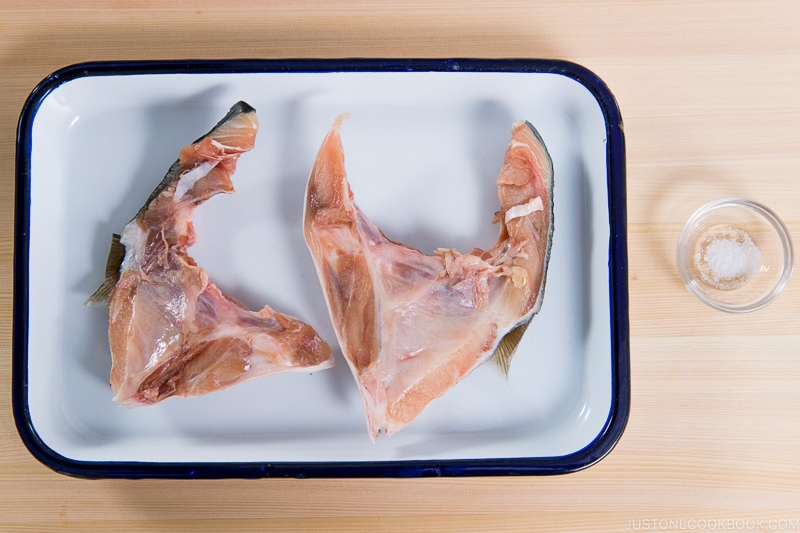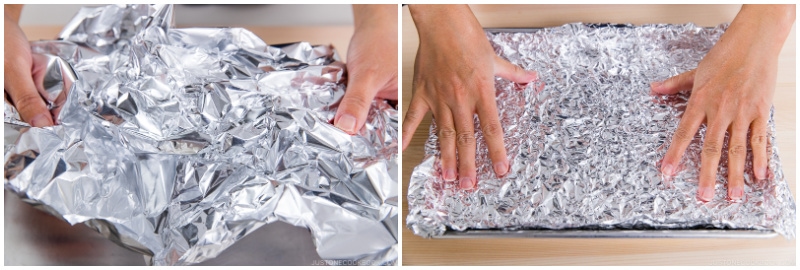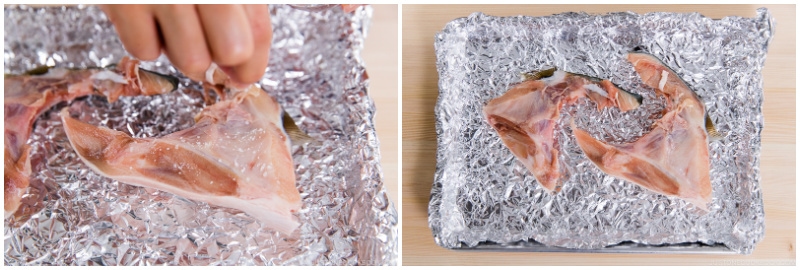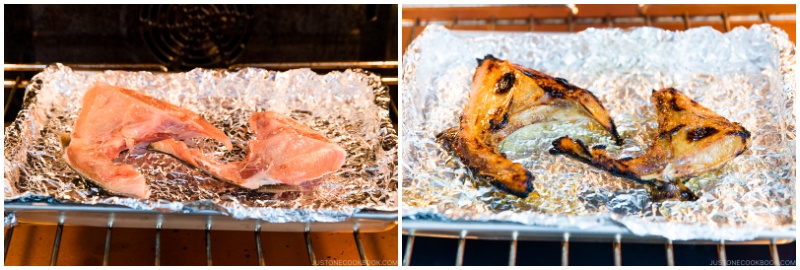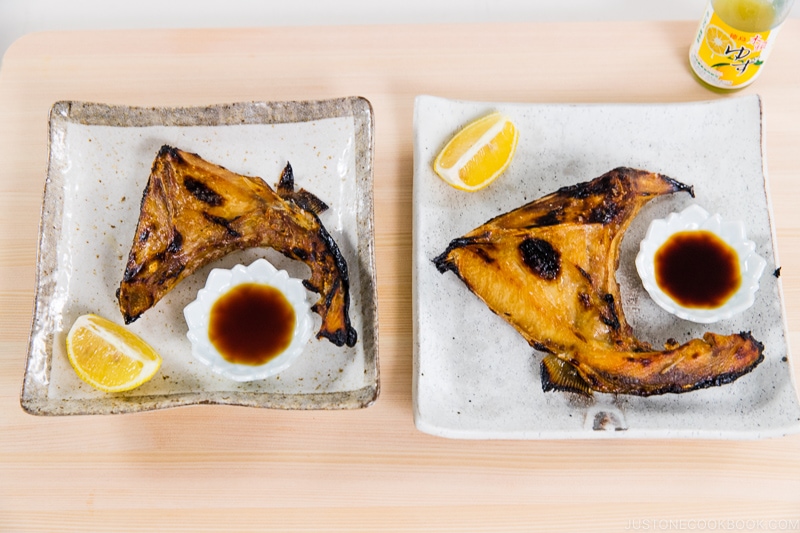Of all the types of fish we eat in Japan, hamachi (魬, はまち, ハマチ) is a favorite among home cooks and professional chefs alike. If you go to a Japanese sushi restaurant, you will most likely find negihama maki, or Yellowtail Scallion Roll, offered as a type of maki sushi. Yellowtail is another name for hamachi. I always have hamachi on hand (fresh or frozen) because it takes no time to prepare (20 minutes), and I can make miso soup or quick side dishes at the same time. The flavor of this Hamachi Kama (Grilled Yellowtail Collar) and its easy cooking method will make it a favorite in your home, too!
What is Hamachi Kama?
Hamachi kama (はまちのカマ) is the collar of the yellowtail located just above the gills and below the head. It is the fattiest part of the fish, making it naturally juicy, and there are two located in each yellowtail (one per side). Typically, hamachi is grilled or broiled until the skin is crisp and the inside is just cooked through. You can easily scrape the flesh off the cartilage with chopsticks.
What Is the Difference Between Hamachi and Yellowtail?
There are several names for this fish—hamachi, buri, yellowtail, or Japanese amberjack—depending on where you are. What’s the difference? It all comes down to the age and size of the fish, and different regions of Japan will also name the fish based on the way it was caught (farmed vs. wild-caught). No matter what name you see on the menu, the raw fish should have pale pink flesh with a stripe of deep red coloring.
What Does Hamachi Kama Taste Like?
The flavor of the yellowtail collar is subtle and clean. The juicy texture of the meat is comparable to mackerel, but the taste is much milder. If you’ve tried fresh hamachi sashimi, you know the flavor is delicate, rich, and slightly sweet. It pairs beautifully with citrus, which you’ll see in my recipe below.
Health Benefits of Hamachi/Yellowtail
Hamachi has a number of nutritional benefits. It’s a naturally oily fish that’s high in omega-3 fatty acids (like salmon), which are important for brain and heart health. It’s also particularly high in vitamin A, vitamin D, and calcium. Like all seafood/meat, it’s important to buy good quality (it makes a difference in the flavor, too), and only consume raw hamachi if you know it is “sashimi quality.”
3 Reasons You’ll Love this Recipe
Ingredients You’ll Need
hamachi kama (yellowtail collar) kosher salt – I use Diamond Crystal brand; skip the salt if you plan to lightly dip your fish in yuzu-flavored soy sauce soy sauce and yuzu juice (extract) – for the dipping sauce lemon wedges – optional, for serving
How to Make Hamachi Kama
I recommend that you broil the fish for the best results, but you could also bake it. Here’s an overview of the instructions for making this dish.
Where to Buy Hamachi Kama
Hamachi kama is available at most Japanese markets. Check the freezer section as well for individual packs of frozen hamachi kama. Korean grocery stores also sell them, sometimes at a cheaper price than Japanese markets. If you have access to a fresh seafood market, you can ask if they have “yellowtail collar” available.
More Japanese Grilled Fish Recipes You’ll Love
Grilled Mackerel Miso Cod Salted Salmon Grilled Sanma (Pacific Saury) Miso Sea Bass
Wish to learn more about Japanese cooking? Sign up for our free newsletter to receive cooking tips & recipe updates! And stay in touch with me on Facebook, Pinterest, YouTube, and Instagram. Editor’s Note: The post was originally published on January 18, 2011. The images and content were updated in October 2020.


